Medical Air Evacuation in World War II
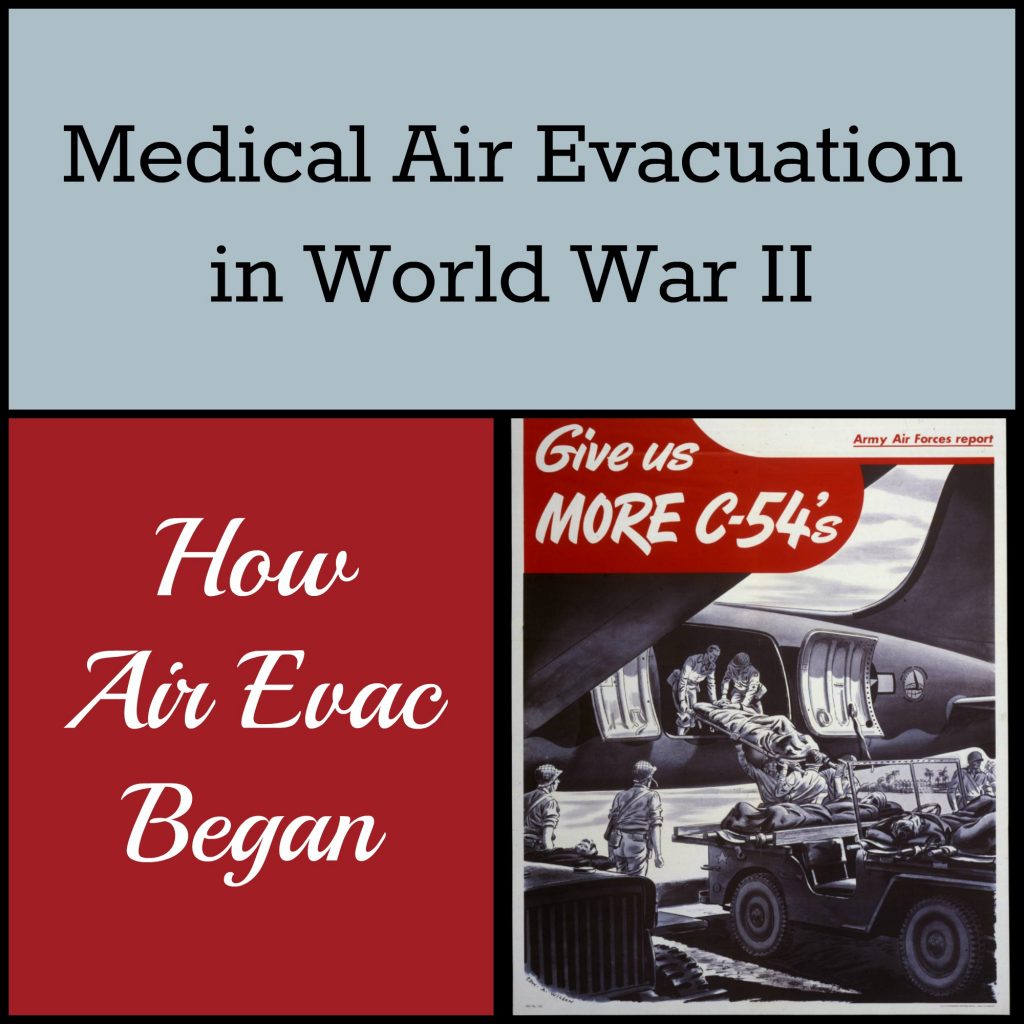 “Do you have room for one more litter case?” the doctor asked. “Private Jenkins needs a thoracic surgeon. The nearest hospital’s in Cefalù, a long ambulance ride over rough roads. By air he’ll be in Mateur in two hours.”
“Do you have room for one more litter case?” the doctor asked. “Private Jenkins needs a thoracic surgeon. The nearest hospital’s in Cefalù, a long ambulance ride over rough roads. By air he’ll be in Mateur in two hours.”
Flight nurse Lt. Mellie Blake stared at the unconscious patient. He lay on a litter, his torso swaddled in white gauze. Bloody streaks painted his face, arms, and khaki pants. “We’re his only hope.”
With Every Letter, p. 379 (Wings of the Nightingale #1)
Before World War II, medical air evacuation was little but theory—by the end of the war, it was recognized as vital to patient care. I enjoyed following the development of air evacuation in my Wings of the Nightingale series, which featured three flight nurses based in the Mediterranean.
This blog series has discussed:.
General principles of air evacuation
The patient’s flight experience
History of Air Evacuation
As soon as the Wright brothers took to the air, clever minds thought of ways to use the new contraption. In 1910 two Army officers constructed the first ambulance plane, and during World War I the Army experimented with transporting patients by air.
The advent of large multi-engine cargo planes in the interwar years made these dreams realistic. In November 1941, the US Army Air Force authorized the Medical Air Ambulance Squadron. Air evacuation was first performed informally in 1942 during the construction of the Alcan Highway and in Burma, New Guinea, and Guadalcanal.
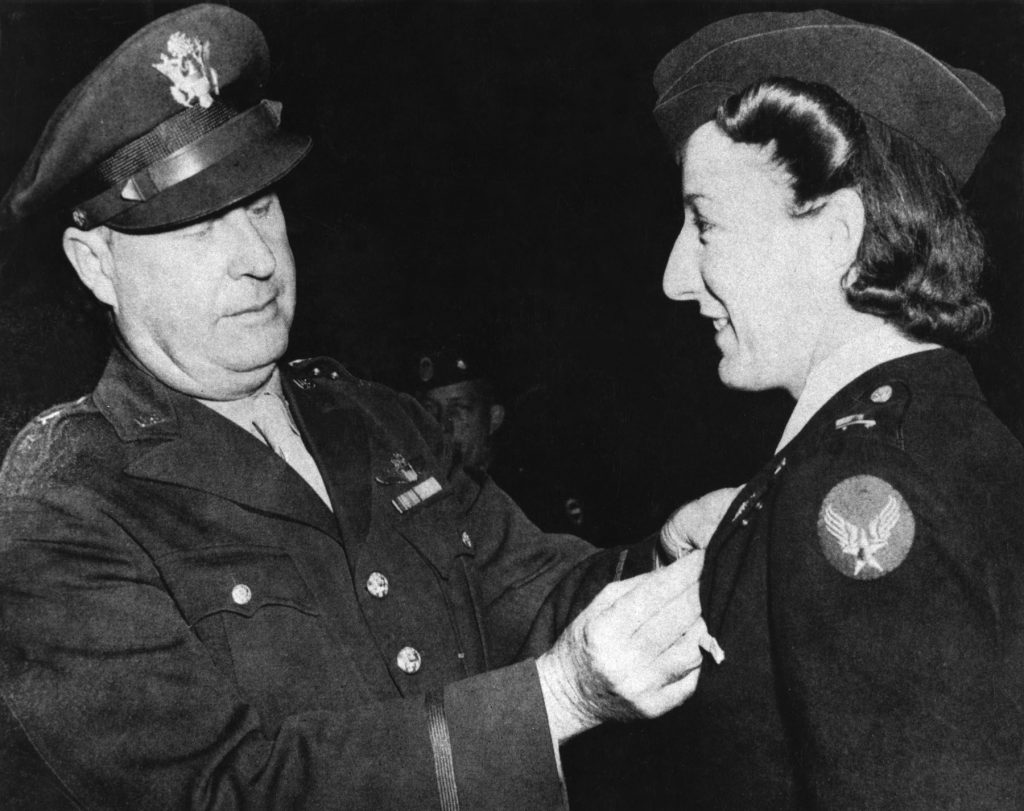
Brig. Gen. Fred Borum presents the Air Medal to Lt. Elsie Ott, the first woman to receive the Air Medal. (US Air Force photo)
On January 17, 1943, the first intercontinental medical air evacuation flight took place. For the first time, a nurse participated in air evacuation. Lt. Elsie Ott had not been trained in air evacuation and had never flown in a plane, but she successfully cared for patients on a week-long, 10,000-mile journey from India to Washington, DC. For this, she received the first Air Medal to be awarded to a woman.
On March 12, 1943 in Algeria, the first official air evacuation with trained flight nurses was flown.
Advantages of Air Evacuation
Speed is the primary benefit of air evacuation. Planes can also traverse inhospitable terrain or dangerous seas. The military came to see that air evacuation required less equipment than ambulance transport, aided recovery, and increased morale on the front.
However, planes couldn’t fly in bad weather, and planes were not reserved for ambulance use during the war. Since top priorities for transport planes were airborne missions and carrying supplies, medical air evacuation depended on availability. Also, dangers existed from crashes and enemy attack. Since transport planes carried cargo and troops, they were not allowed to be marked with the Red Cross and were legitimate military targets. In some combat theaters, fighter coverage was provided.
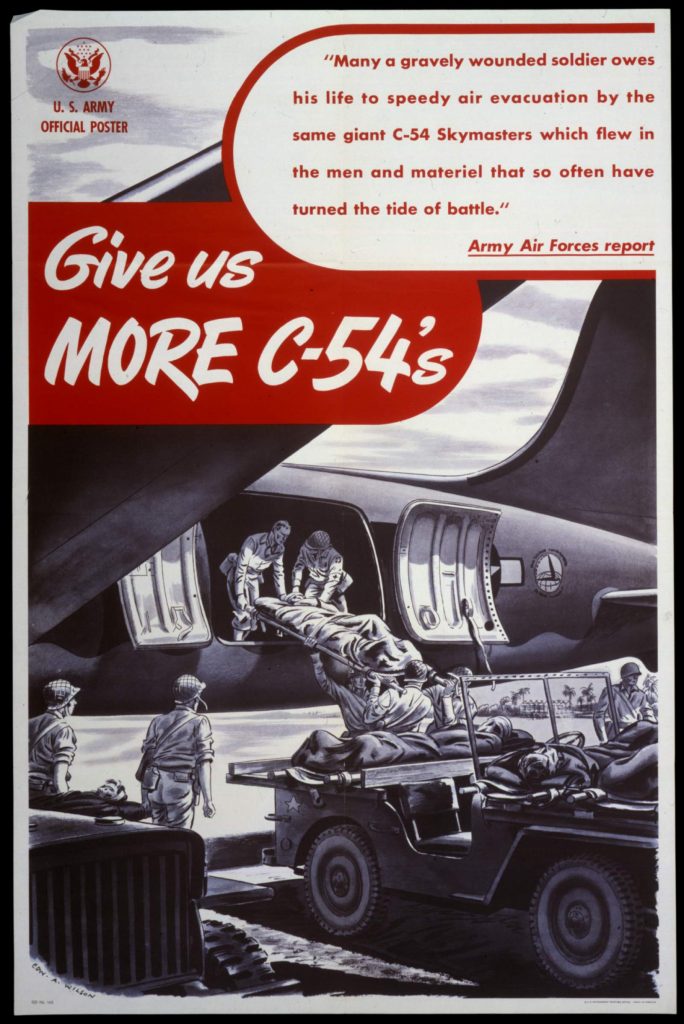
US poster, WWII
Use of Air Evacuation in World War II
Thirty Medical Air Evacuation Transport Squadrons served in World War II in every combat theater. In all, 1,172,000 patients were transported by air. About half were ambulatory patients (the “walking wounded”) and half were litter patients. Only 46 patients died in flight, although several hundred did perish in crashes. By 1944, 18 percent of all Army casualties were evacuated by air.
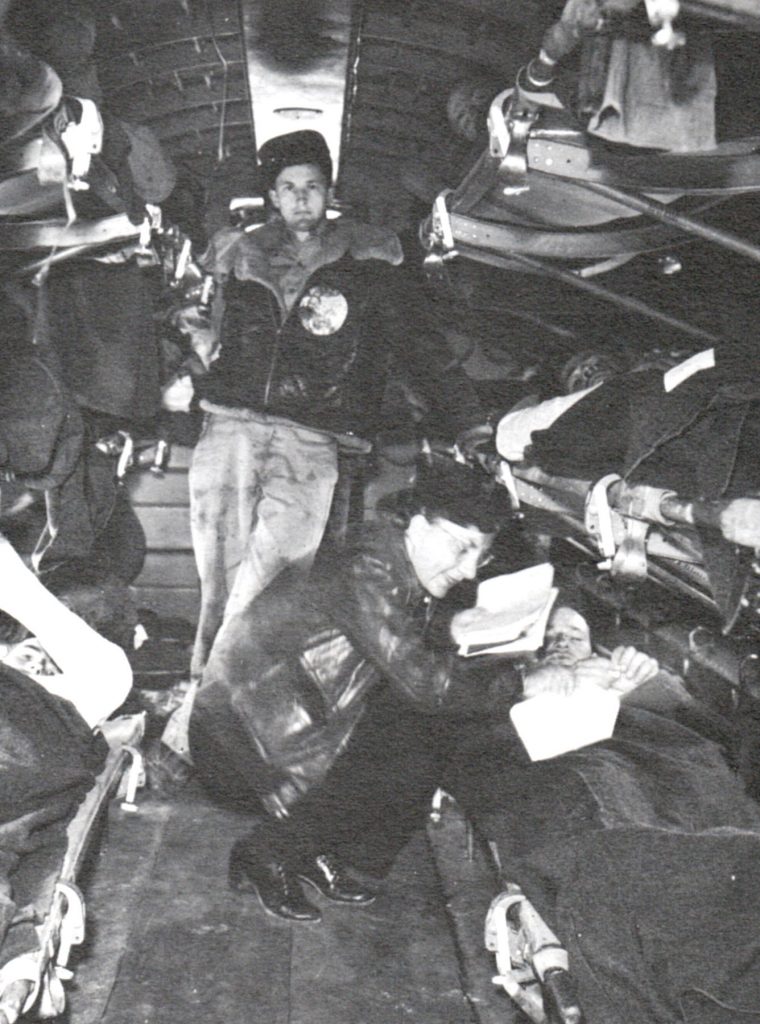
Flight nurse Lt. Aleda Lutz of 802nd Medical Air Evacuation Transport Squadron in a C-47 in North Africa, 1943. Lt. Lutz was killed in a plane crash in France Nov. 1, 1944, one of 16 flight nurses killed in service. (US Army Medical Department, Office of Medical History)
Planes
The Douglas C-47 Skytrain was the workhorse of air evacuation. This dependable two-engine plane was used for shorter flights within a combat theater and could fly to forward landing strips close to the battlefield. A C-47 carried 18-24 patients, depending on how many were on litters.

Douglas C-47 Skytrain of US Air Transport Command, 1940s (US Air Force photo)
For transoceanic flights, the four-engine Douglas C-54 Skymaster was used. The preferred load for a C-54 was 18 litter patients and 24 ambulatory. These flights carried patients from the combat theater stateside when the patient required 90-180 days of recovery or was eligible for medical discharge.
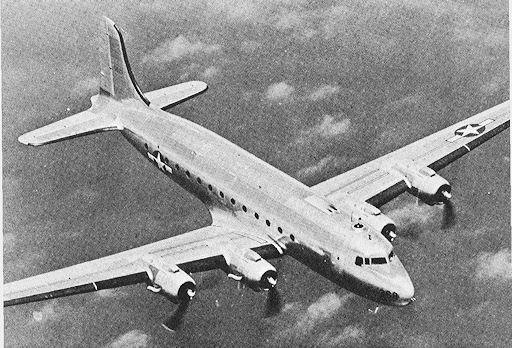
C-54 Skymaster cargo plane, WWII (US Army Air Force photo)
The Curtiss C-46 Commando was used less frequently. Although it could carry 33 patients, the cargo door made loading difficult, and the plane had an unsavory habit of exploding when the cabin heater was used.
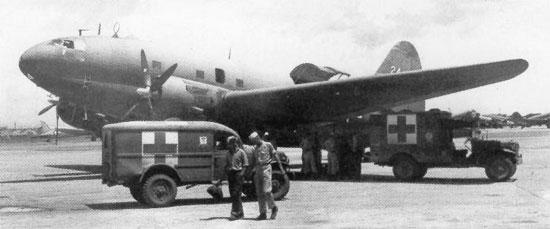
Dodge ambulances standing by C-46 Commando at Clark Field, Manila, Philippine Islands, 29 Sep 1945 (public domain via WW2 Database)
Medical air evacuation revolutionized the care of the wounded. Gen. Dwight Eisenhower credited air evacuation, sulfa drugs, penicillin, and the use of plasma and whole blood as key factors in the significant drop in the mortality rate among the wounded from World War I to World War II.
Resources:
Links, Mae Mills & Coleman, Hubert A. Medical Support of the Army Air Forces in World War II. Office of the Surgeon General, USAF. Washington, DC. 1955.
Futrell, Robert F. Development of Aeromedical Evacuation in the USAF: 1909-1960. USAF Historical Division, Research Studies Institute, Air University, 1960.

